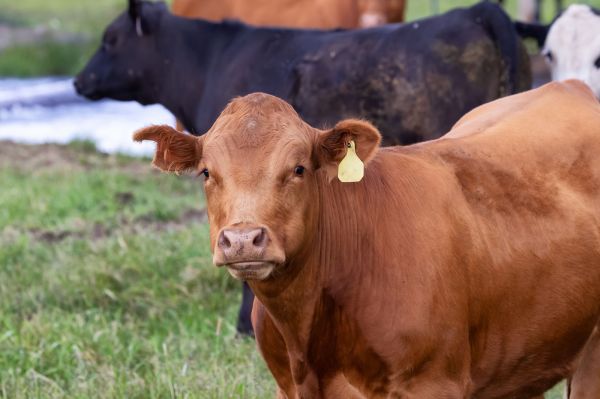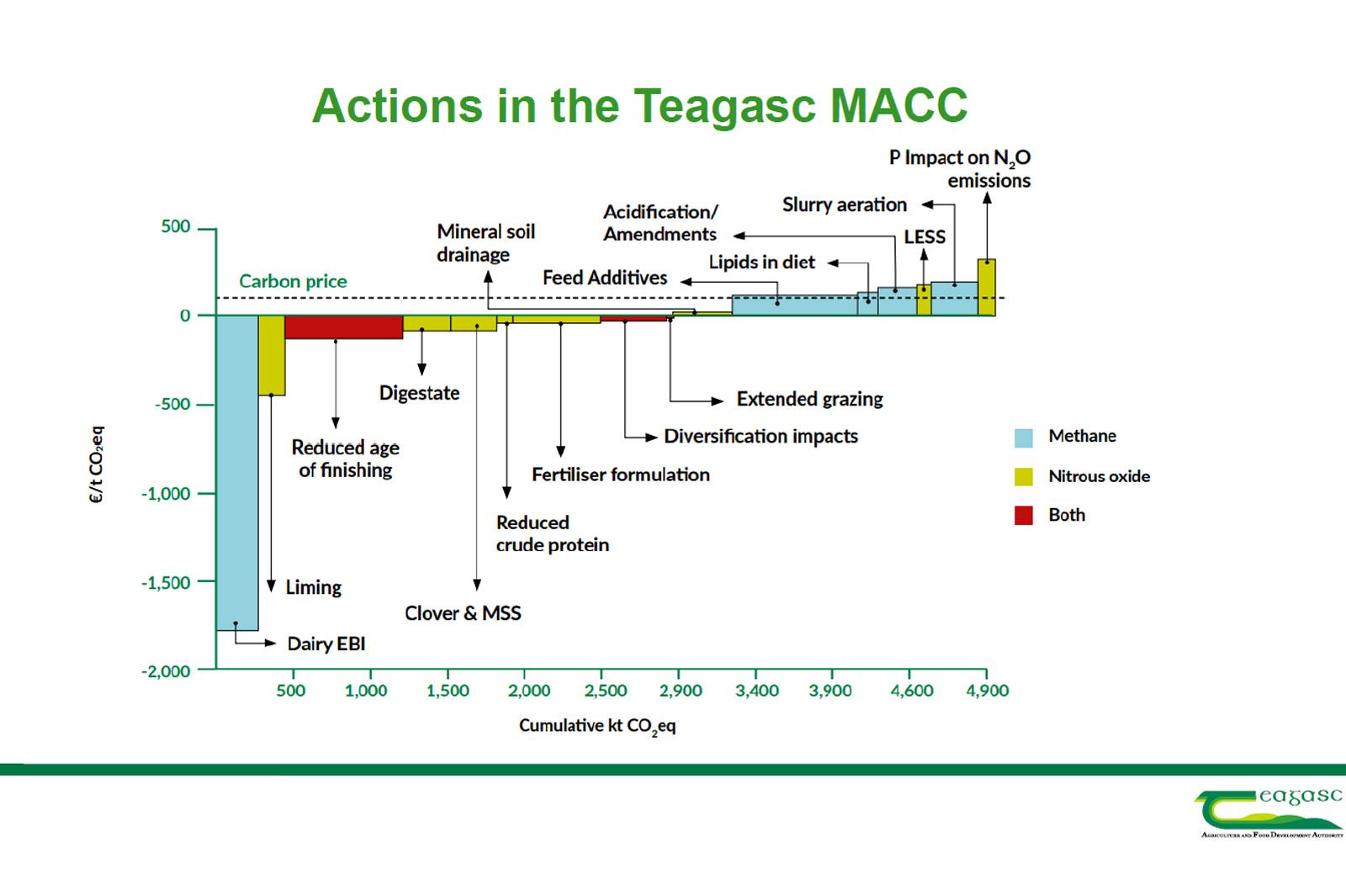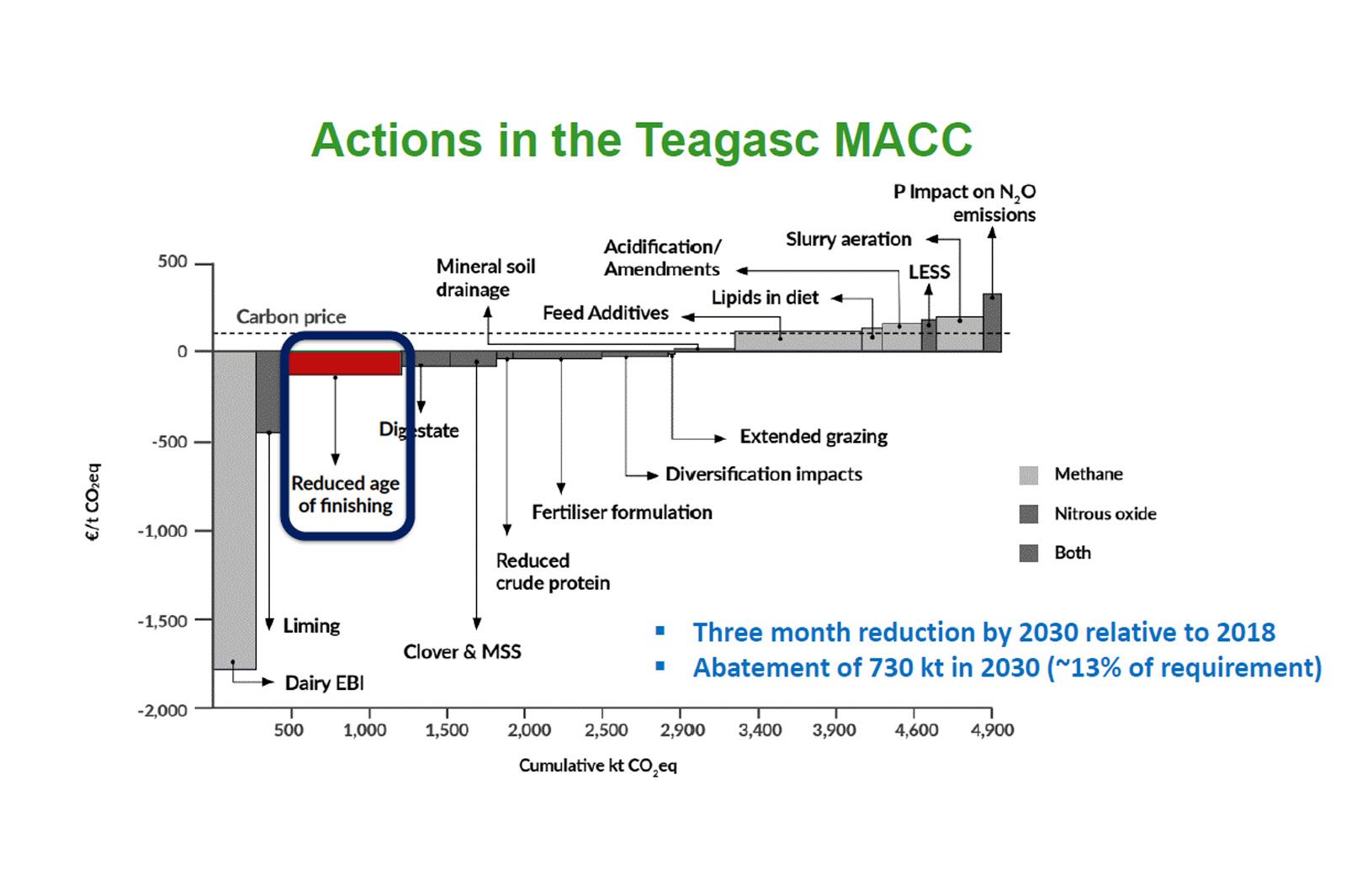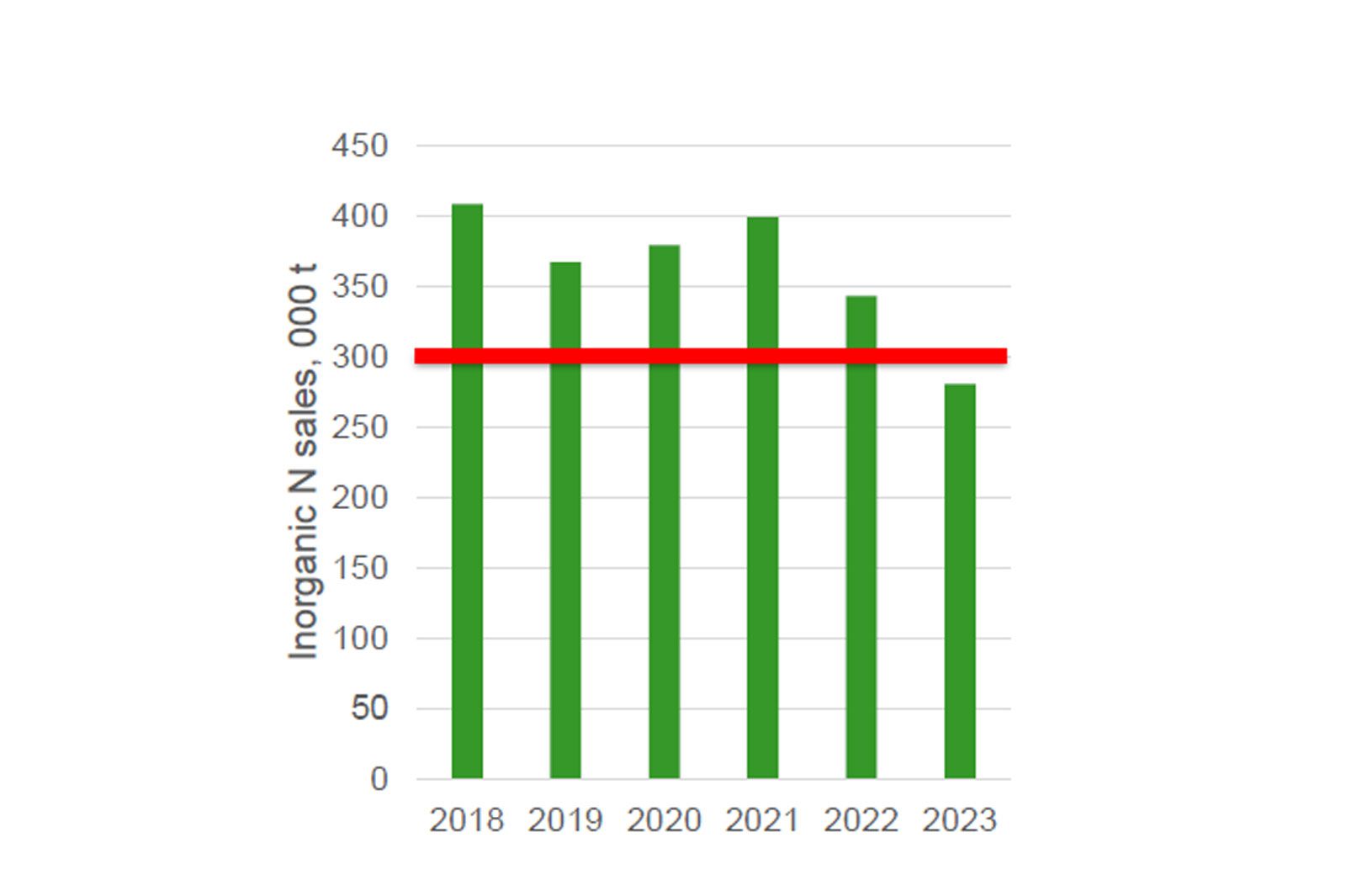MACC: To aid and abate

In outlining Teagasc’s latest findings on the beef sector’s potential to reduce greenhouse gas (GHG) emissions, Paul said that while strides are being made, we cannot take our eye off the climate-target ball.
“If we look at the 2025 carbon budget [for agriculture], the target we are looking at is [abating] 295 million tonnes of CO2 equivalent (e). That’s our total budget and we have almost half of that used already,” he said.
“From 2026 to 2030, the target is 200 million tonnes and anything we miss now in terms of the first carbon budget period, will go into the second one,” he explained.
Beef farm systems generate in the order of 4,500 tonnes of CO2e per hectare.
Teagasc’s Marginal Abatement Cost Curve (MACC), Paul explained, is the foundation of the current roadm ap to reducing emissions on farms: “It is a visual representation of the mitigation options ranked from least to most expensive. It is a simple concept but a very detailed piece of work. Within the scope of the analysis, we have three mitigation scenarios and two mitigation pathways,” he said. The first scenario, he explained, is the most likely one, where we have about 6.8 million cattle by 2030; the second scenario involves low-animal numbers of 6.5 million cattle; and scenario three is the high-animal scenario of about 7 million cattle by 2030. The two mitigation pathways comprise moderate-adoption pathways and ambitious-adoption pathways. Paul chose scenario one and ambitious-mitigation adoption to illustrate a number of abatement achievements.
Indications below and above the line in Figure 1, reflect the cost of the measure. The further below the line, the more cost-effective the measure is, and the further above the line, the more costly the measure. The width of the bar reflects the level of abatement anticipated, Paul explained.

Figure 1. Image: Teagasc.

Figure 2. Image: Teagasc.
“The likes of dairy EBI, liming, and reduced age of finishing are below the line. Dairy EBI, in particular, is strongly below the line, reflecting that, yes, it reduces emissions but it is also a really economically sensible thing for farmers to do and that is why we are seeing the level of progress on the dairy genetics side.”
Addressing the lack of reference to beef genetics on the graph, he said: “We have beef genetics in the overall MACC, indeed the likes of ‘age of finishing’ would be captured to some extent in genetics but the bar for beef genetics might be quite a bit narrower than the dairy EBI bar, reflecting that the level of uptake in terms of progress is somewhat lower but the depth of the bar is just as low so the benefit at farm level is just as great.”
Moving to the right-hand side of the graph, we see the likes of low emission slurry spreading (LESS) sits above the bar – it is expensive technology but there are benefits in terms of reducing nitrous oxide emissions, Paul explains.
Reduced age of finishing
The reduced-age-of-finishing target is three months by 2030, relative to 2018, and, according to Paul, we have already achieved 1.1 months of those three months. “We still have some way to go but we are trending in the right direction,” he said.
“Achieving those three months, it is anticipated that it will give us an abatement in the order of 730,000t by 2030 – that is about 13 per cent of the overall requirement (see Figure 2).
“If we look at the finishing age of beef cattle (2021 data), we have seen really strong reductions in finishing age on cattle farms over 10 years, or so, particularly in the first five years within that decade, when we were achieving close to nine days per year reduction. The second half of that decade, it was closer to four days.
“The point is that farmers have already made very substantial progress. If we put the level of progress made at finishing age, into emissions terms, at current animal numbers, we have abated in the order of 450,000t from the beef sector, and that is really substantial.”

Figure 3. Image: Teagasc.
Increased output
In answering the question of whether abatement will require farmers to compromise on their ability to satisfy the market demands or their ability to create revenue at farm level, the data is clear: “If we look at the data between 2011 and 2021, we actually increased our beef output by 14 per cent, while reducing the age of finishing,” he said. This figure was also achieved because there was an additional 166,874 cattle in the system. “When adjusted to compare current animal numbers relative to 2011, at constant population, we have reduced age of finishing by just over six days per year and increased our beef output by 2 per cent, so that is a really, really positive story on one of the key measures within the MACC.”
NITROGEN-BASED ACTIONS
The ambition, Paul explained, is to reduce inorganic nitrogen to less than 300,000t by 2030 and to replace 75 per cent of our CAN and 100 per cent of our urea with protected urea by 2030. “Similarly, in terms of magnitiude to reduced age of finishing, this will give us an abatement of 840,000t of CO2e by 2030, or about 15 per cent of the requirement.
Paul explained how we are doing: “If we look at protected urea, it is a bit of a slow burner especially on the drystock side. I think we have seen really steady progress on the dairy side. But it is a relatively new technology/fertiliser at farm level, we know that farmers will use new technologies if they work and are proven to be effective, and we are starting to see that. So, in the dairy sector, about 14 per cent are using protected urea, and about 4 per cent in the beef side.”
There has been a really positive discovery around total inorganic nitrogen use. “We were already below the 2030 target in 2023. Clearly a big driver here – and we have to be realistic about why – it is a behavioural response to price, particularly in 2022 when we saw a very sharp reduction.”




